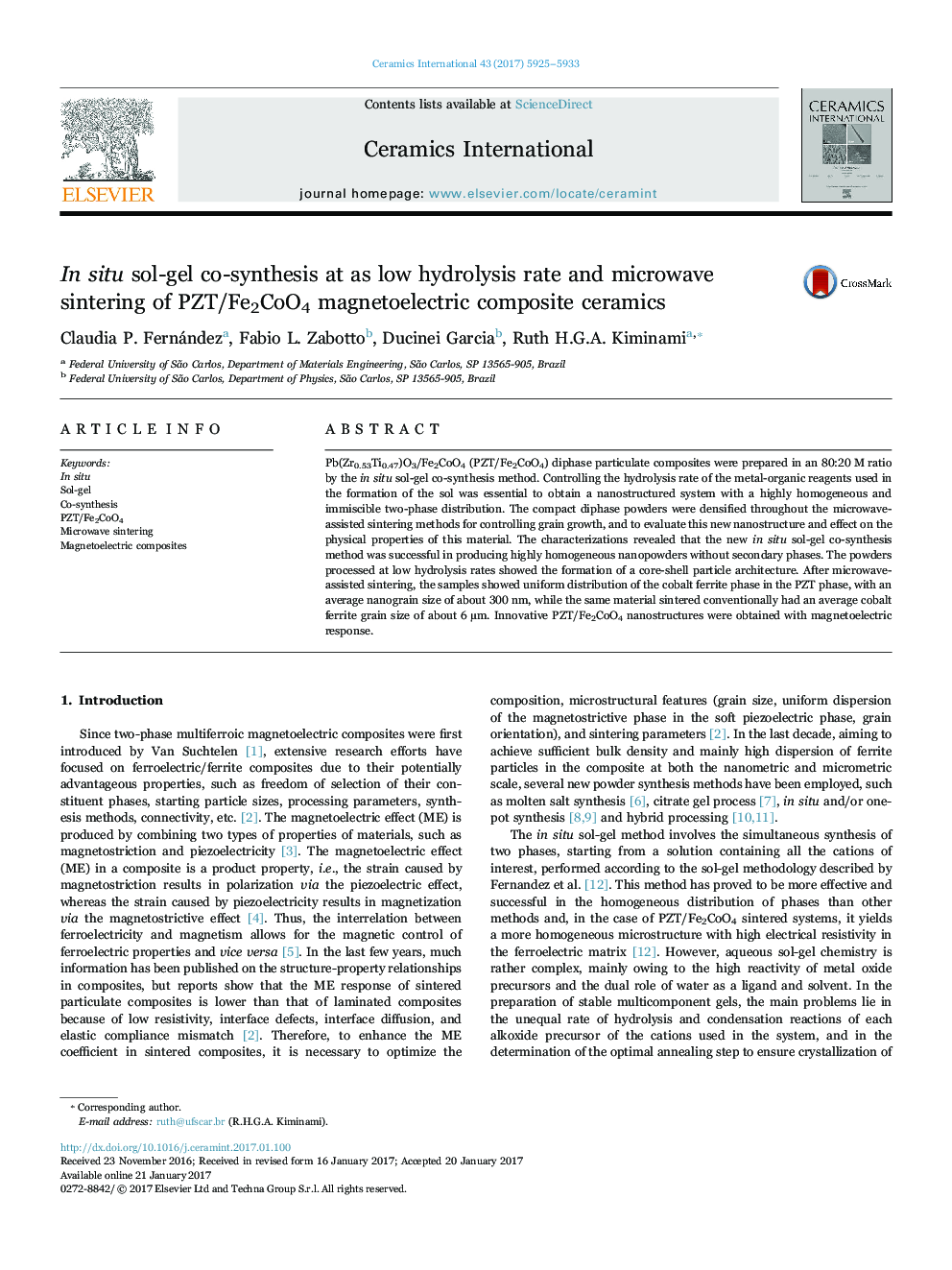| Article ID | Journal | Published Year | Pages | File Type |
|---|---|---|---|---|
| 5438422 | Ceramics International | 2017 | 9 Pages |
Pb(Zr0.53Ti0.47)O3/Fe2CoO4 (PZT/Fe2CoO4) diphase particulate composites were prepared in an 80:20 M ratio by the in situ sol-gel co-synthesis method. Controlling the hydrolysis rate of the metal-organic reagents used in the formation of the sol was essential to obtain a nanostructured system with a highly homogeneous and immiscible two-phase distribution. The compact diphase powders were densified throughout the microwave-assisted sintering methods for controlling grain growth, and to evaluate this new nanostructure and effect on the physical properties of this material. The characterizations revealed that the new in situ sol-gel co-synthesis method was successful in producing highly homogeneous nanopowders without secondary phases. The powders processed at low hydrolysis rates showed the formation of a core-shell particle architecture. After microwave-assisted sintering, the samples showed uniform distribution of the cobalt ferrite phase in the PZT phase, with an average nanograin size of about 300 nm, while the same material sintered conventionally had an average cobalt ferrite grain size of about 6 µm. Innovative PZT/Fe2CoO4 nanostructures were obtained with magnetoelectric response.
